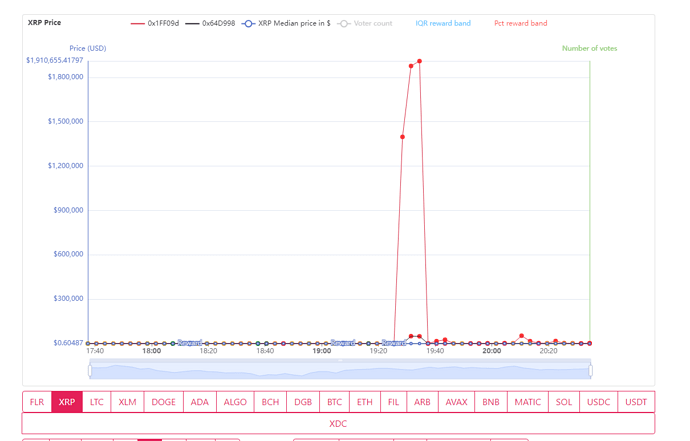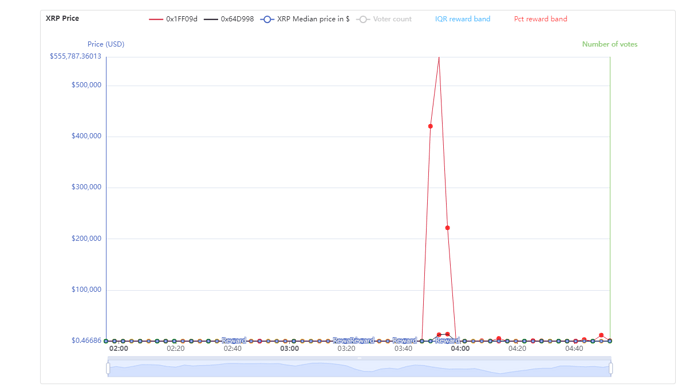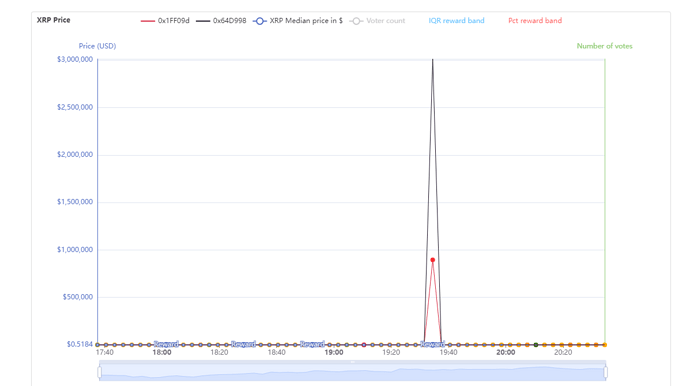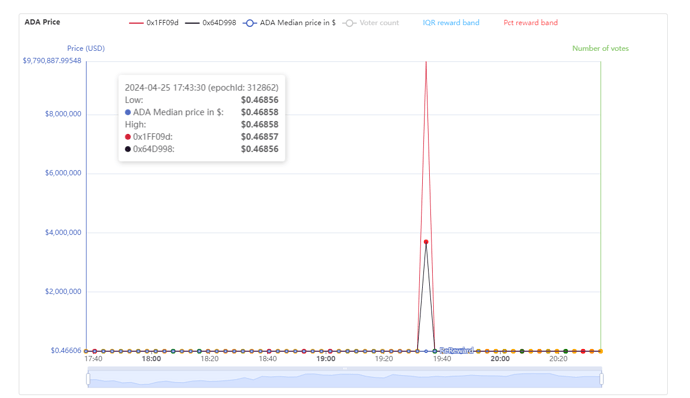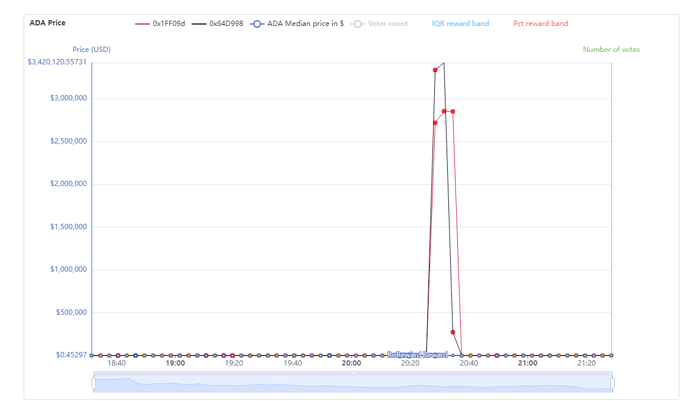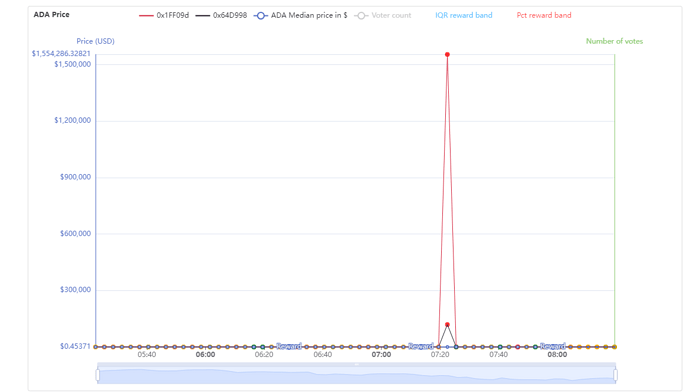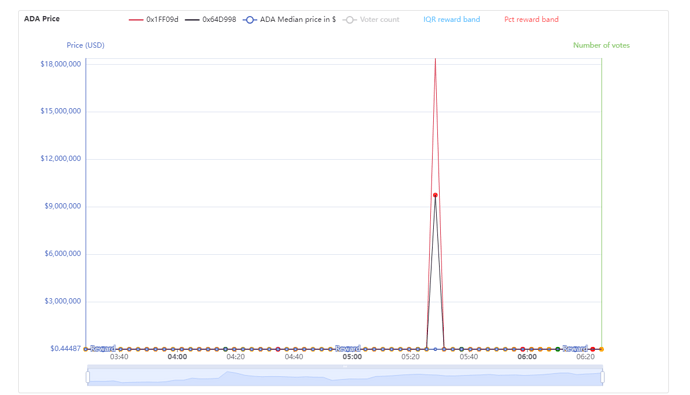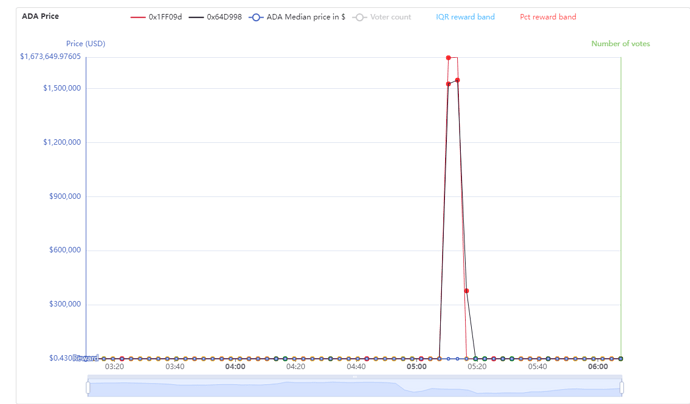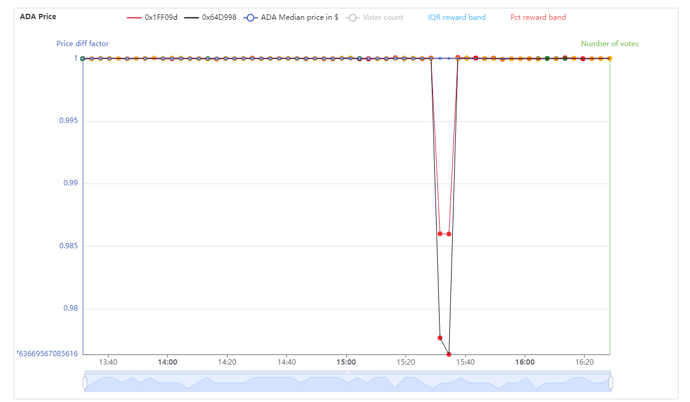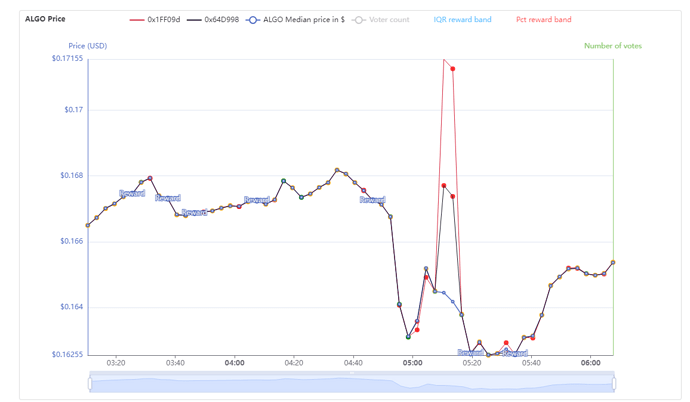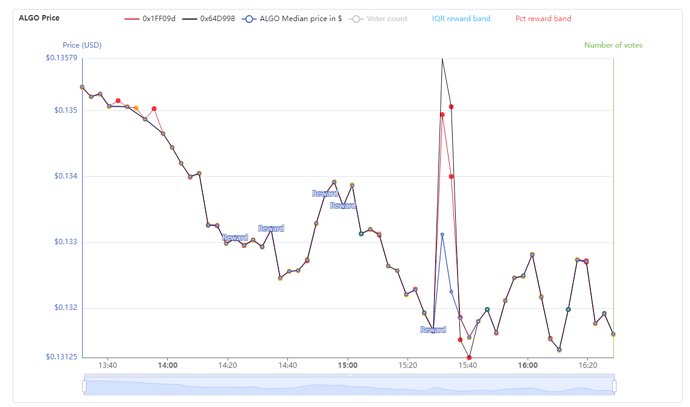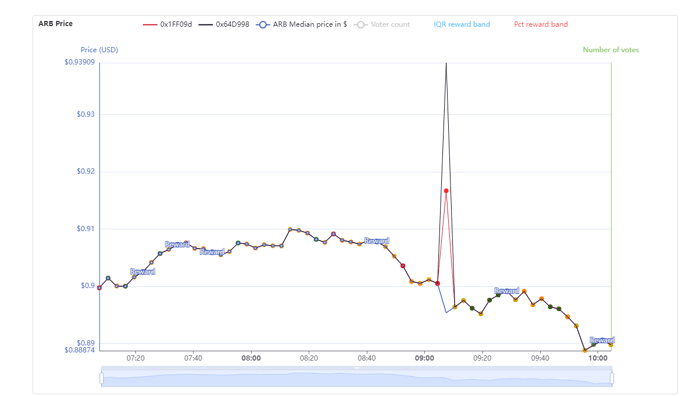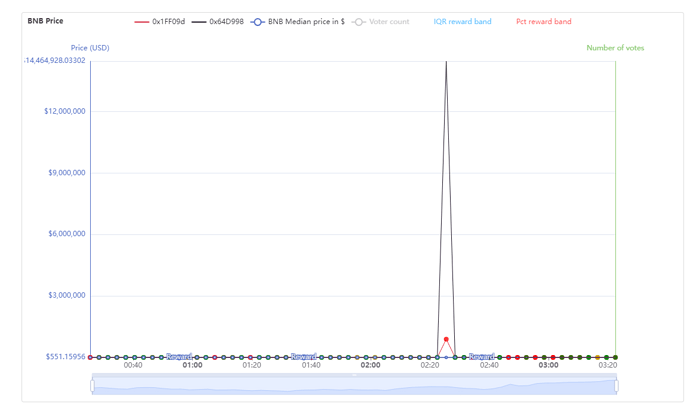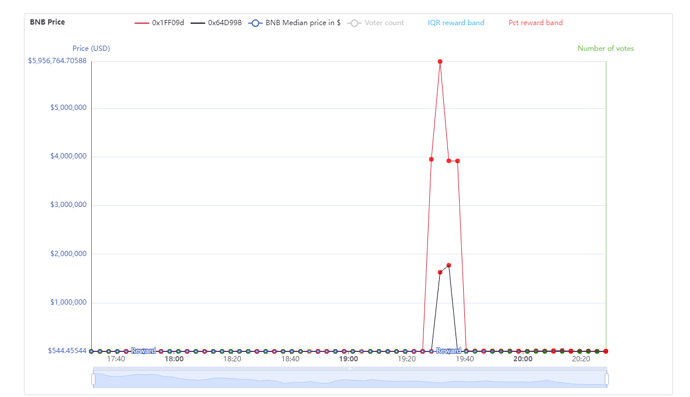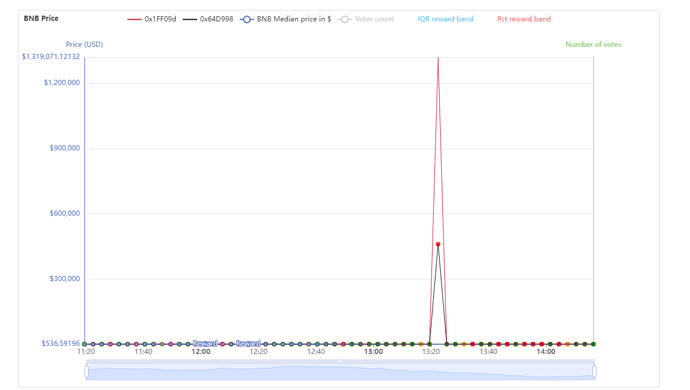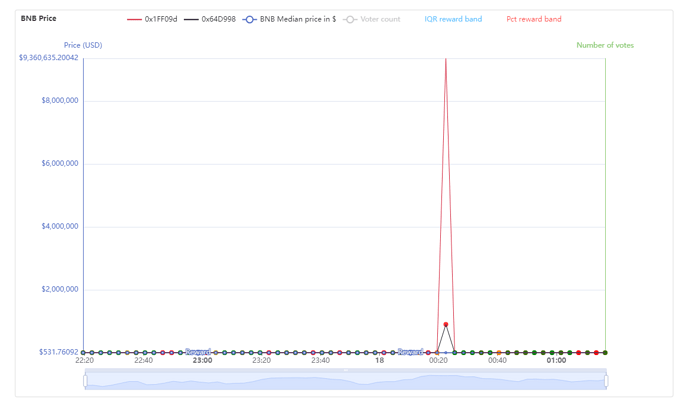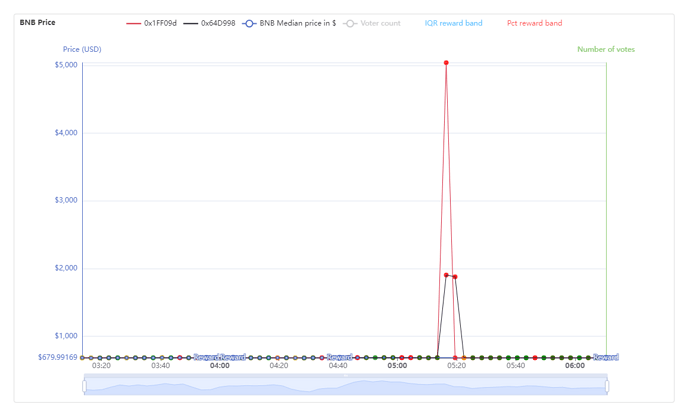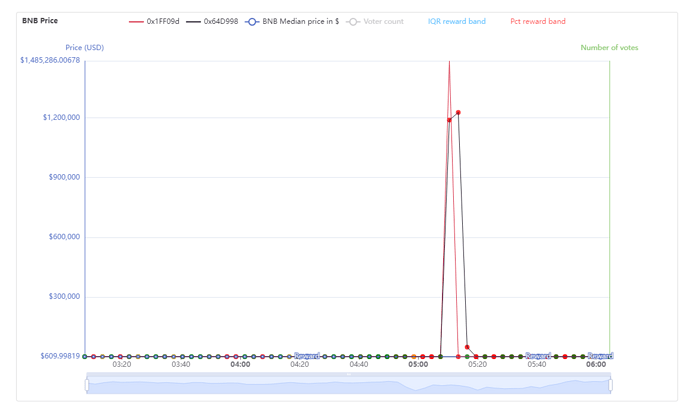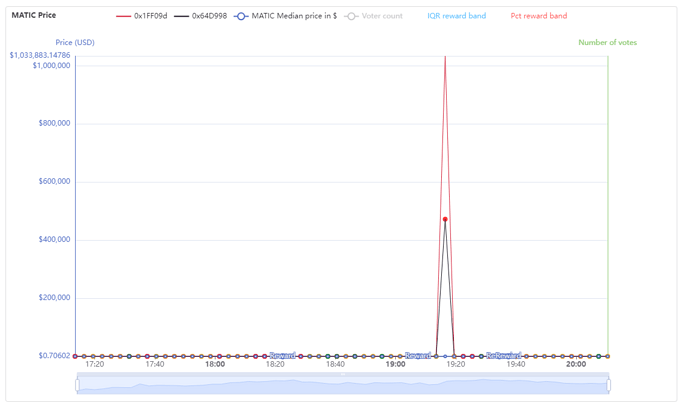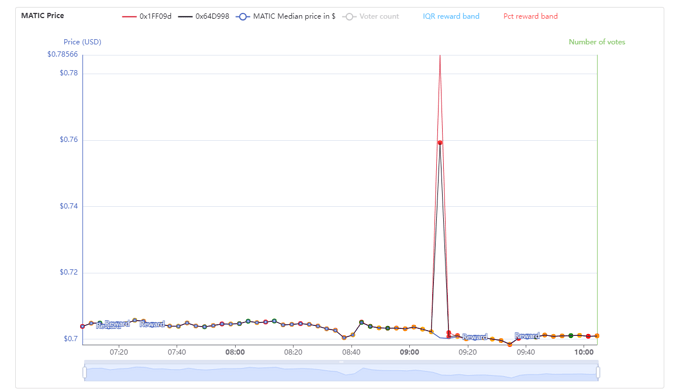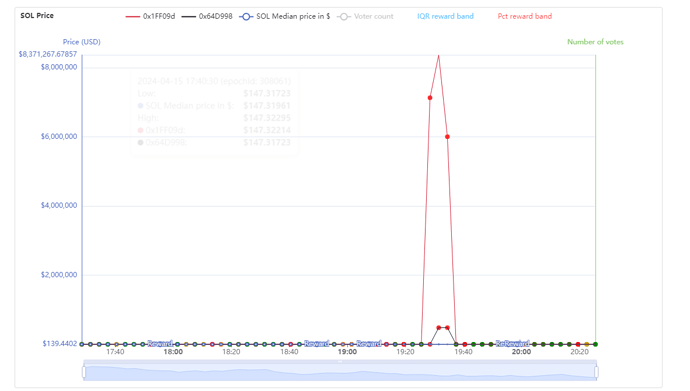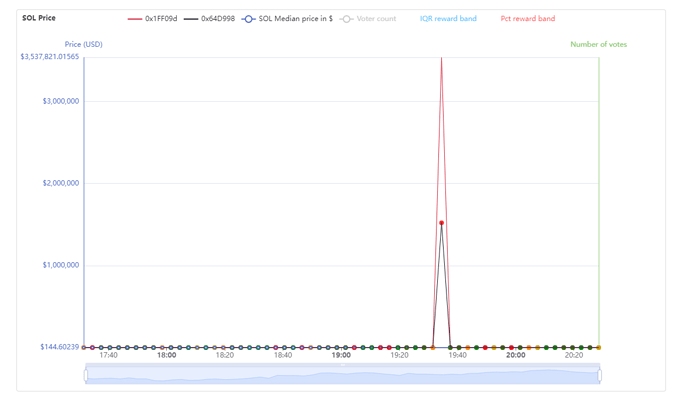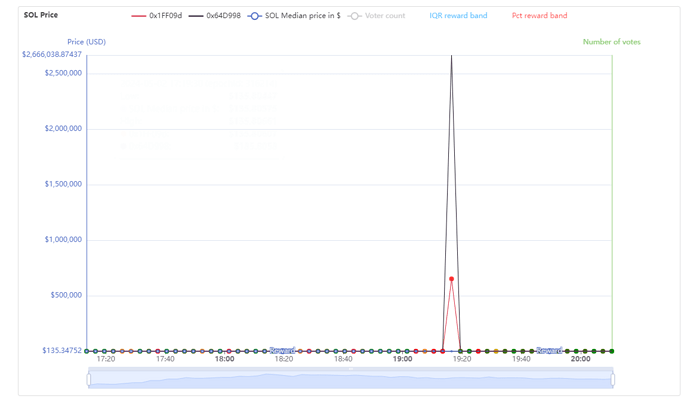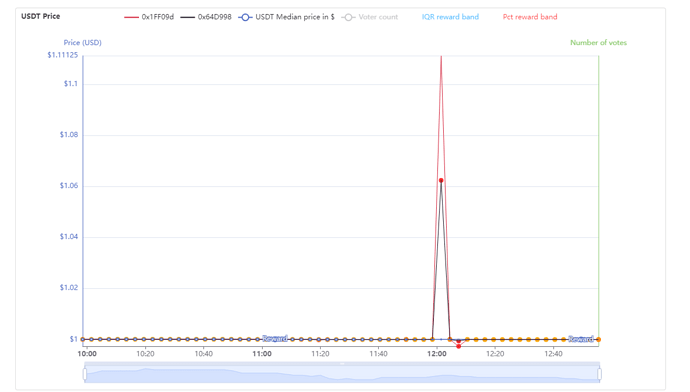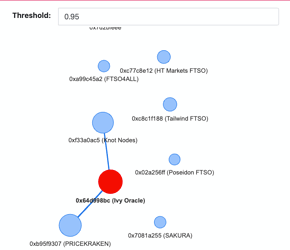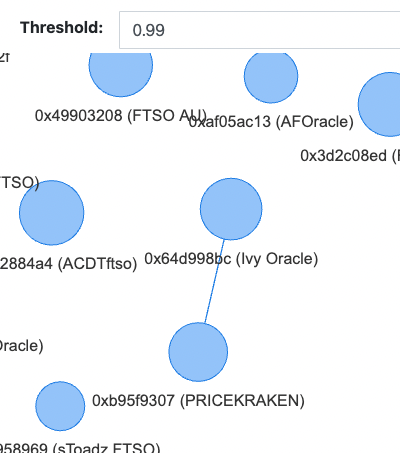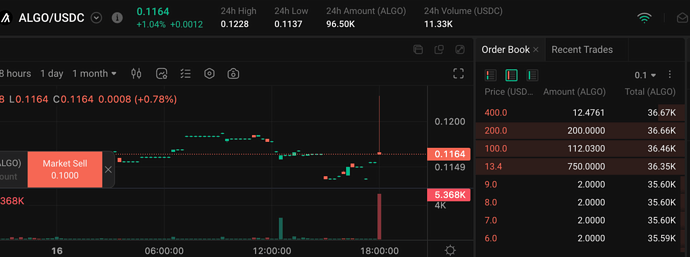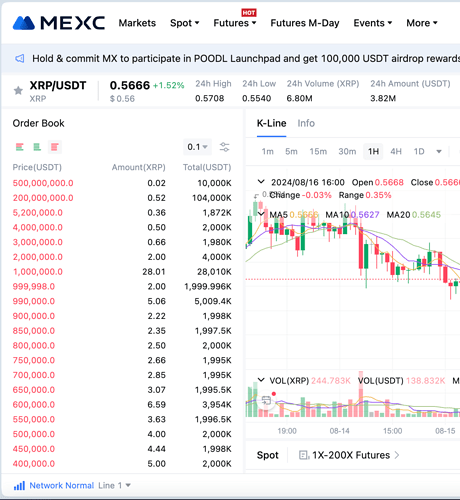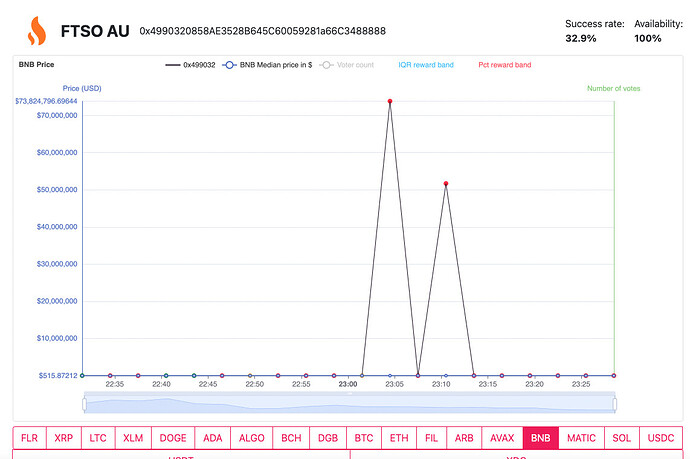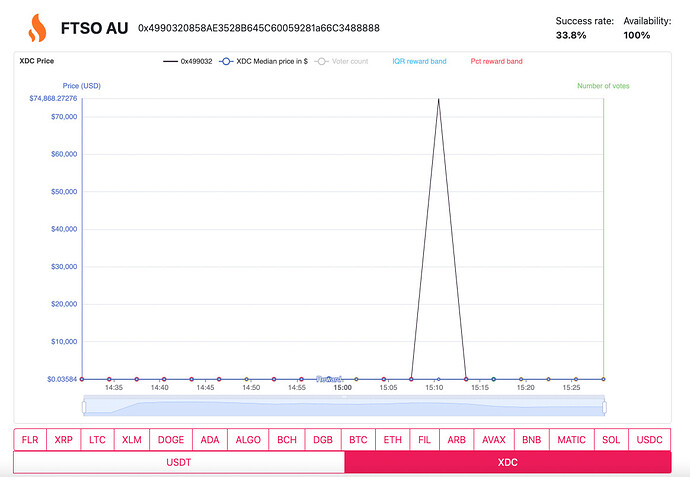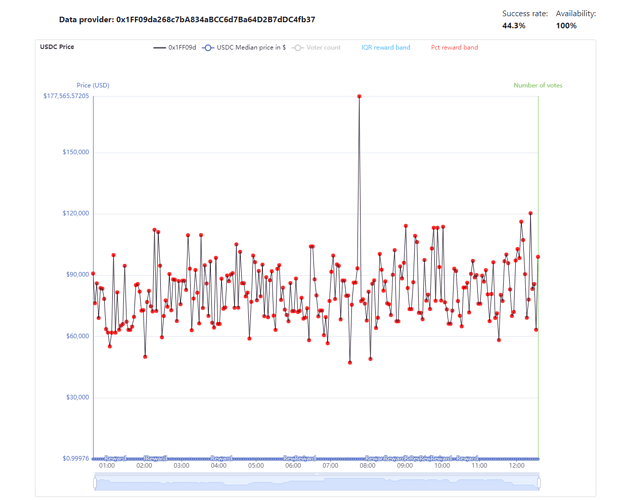Provider Name(s):
Anon
@ivy_oracle
Provider Delegation Addresses:
Anon Flare address: 0x1FF09da268c7bA834aBCC6d7Ba64D2B7dDC4fb37
Anon Songbird address : Unknown
Ivy Oracle Flare address: 0x64D998BC81424131E5aF05071263fDeBD1a82986
Ivy Oracle Songbird address: 0xa174d46ef49d7d4a0328f9910222689e9eab2f45
Network: Evidence on Flare, Action required on Both Networks
Overview:
Good afternoon and sorry for my bad English,
Im gonna present data that shows many price spikes common between these 2 providers in a number and scale great enough that i feel is pretty telling of something being off.
I have run an analyzer for 7M Flare epochs ending in June and these 2 providers showed up in over 50 cases to have spikes ranging from 700000% to 3%. I picked only a few dozen because i feel they represent the case enough.
All the other providers had 0-3 mentions in the same epoch as others so this feels overwhelming.
This will be a long thread and i ask the rest of the members to look at each piece of data individually and form their own opinion, also i ask you to reserve judgement until the mentioned providers have a chance to give their own side of the story.
As the network gets more mature and dapps start to use the data we provide i would also like to introduce the first vote that takes into consideration price protection mechanisms and ask people to post their opinions on it, because these 2 providers post such erroneous prices that inhibit the FTSO system.
1st Offense: Yes on both (Ivy Oracle and Anon)
Previously Chilled: No on both (Ivy Oracle and Anon)
Timeframe for Open Discussion: 10 Days
Request of Management Group Members: AtlasTSO respectively asks all MG members for input on the evidence provided in this proposal and to participate in subsequent onchain voting following the discussion period. I also ask the opinions of the members on if price protection should be something that should be considered an offence.
Request to the Flare Foundation: If voting meets quorum, AtlasTSO respectfully requests that the Foundation action a Two Epoch chill of Anon in Flare Network and Ivy Oracle in Songbird and Flare Network
Evidence:
XRP
Case 1
Anon = 208k
Ivy = 5M
Case 2
Anon = 1.87M
Ivy = 50k
Case 3
Anon = 555k
Ivy = 12k
Case 4
Anon = 895k
Ivy = 3M
ADA
Case 1
Anon = 19M
Ivy = 15k
Case 2
Anon = 9.8M
Ivy = 3.7M
Case 3
Anon = 3.4M
Ivy = 2.8M
Case 4
Anon = 1.5M
Ivy = 120k
Case 5
Anon = 18M
Ivy = 9.8M
Case 6
Anon = 1.6M
Ivy = 1.5M
Case 7
ALGO
Case 1
Case 2
ARB
Case 1
BNB
Case 1
Anon = 893K
Ivy = 14M
Case 2
Anon = 5.9M
Ivy = 1.6M
Case 3
Anon = 1.3M
Ivy = 460k
Case 4
Anon = 9.3M
Ivy = 900k
Case 5
Anon = 5K
Ivy = 1.9K
Case 6
Anon = 1.4M
Ivy = 1.2M
MATIC
Case 1
Anon = 1M
Ivy = 470K
Case 2
SOL
Case 1
Anon = 8M
Ivy = 480K
Case 2
Anon = 3.5M
Ivy = 1.5M
Case 3
Anon = 651K
Ivy = 2.6M
USDT
Case 1

